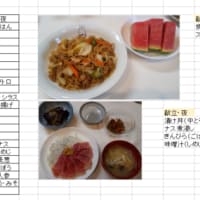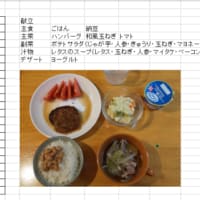FUROFUKI daikon 
〈4servings〉

Japanese radish・・・2/3
dried kelp ・・・・・・1slice
yuzu orange・・・・・a little
the water from washing rice・・as appropriate
Nerimiso:
Red miso・・・80g
mirin ※・・ 11/2 tablespoons
sugar ・・・・ 2 tablespoons
stock ・・・・1/3 cup
※Japanese sweet rice wine for cooking
〈Recipe〉
① Cut the radish in the round slices 3.5cmthickness and peel it.
② Cut it into quarters, but not all the way through, otherwise the radish will cook too quickly.
③ Put the radishes in a pan and cover the radishes with the rice water and boil it for about 80% then wash the radishes with cold water from a tap.
④ Twist a wet towel and wipe the dried kelp on both sides and put it in the pan. Then put the radish on the kelp, pour water on it and cook it on a high flame. After the water boils, simmer it for about 20min. on a low flame.
⑤ Transfer the nerimiso’s ingredients into a small pan and mix until thoroughly combined using a wooden ladle on a low flame.
⑥ Put the radish in a bowl and pour the miso sauce over it and then put the cut yuzu orange strips on the top.
〈Memo〉
I recommend it for people whose stomach has weakened or habitual constipation.
I think it is better using uncooked radishes.
Because Japanese radishes have amylase, they regulate the digestion.
But amylase is easily broken by cooking.
So Japanese people use uncooked radish, which we grind and put a little soy sauce on it.
The leaves have a lot of vitamins and minerals, so you should use them to sauté and it balances your intake of nutrition well.
The Japanese radish is a popular in Japan, and the best season for them is the winter.
So if you use this delicious vegetable in boiled dishes, it warms your body in cold weather.
If you like, you can add minced chicken to the Miso to increase the volume and calory-intake.
〈nutrition〉per person
Energy 110 kcal
Protein 5.6 g
Fat 1.3 g
Carbohydrate 18.2 g
Salt 2.6 g
If you need more details see here ふろふき大根
ふろふき大根
If you don't know Japanese radish (called daikon),see here daikon
daikon

〈4servings〉


Japanese radish・・・2/3
dried kelp ・・・・・・1slice
yuzu orange・・・・・a little
the water from washing rice・・as appropriate
Nerimiso:
Red miso・・・80g
mirin ※・・ 11/2 tablespoons
sugar ・・・・ 2 tablespoons
stock ・・・・1/3 cup
※Japanese sweet rice wine for cooking
〈Recipe〉

① Cut the radish in the round slices 3.5cmthickness and peel it.
② Cut it into quarters, but not all the way through, otherwise the radish will cook too quickly.
③ Put the radishes in a pan and cover the radishes with the rice water and boil it for about 80% then wash the radishes with cold water from a tap.
④ Twist a wet towel and wipe the dried kelp on both sides and put it in the pan. Then put the radish on the kelp, pour water on it and cook it on a high flame. After the water boils, simmer it for about 20min. on a low flame.
⑤ Transfer the nerimiso’s ingredients into a small pan and mix until thoroughly combined using a wooden ladle on a low flame.
⑥ Put the radish in a bowl and pour the miso sauce over it and then put the cut yuzu orange strips on the top.
〈Memo〉

I recommend it for people whose stomach has weakened or habitual constipation.
I think it is better using uncooked radishes.
Because Japanese radishes have amylase, they regulate the digestion.
But amylase is easily broken by cooking.
So Japanese people use uncooked radish, which we grind and put a little soy sauce on it.
The leaves have a lot of vitamins and minerals, so you should use them to sauté and it balances your intake of nutrition well.
The Japanese radish is a popular in Japan, and the best season for them is the winter.
So if you use this delicious vegetable in boiled dishes, it warms your body in cold weather.
If you like, you can add minced chicken to the Miso to increase the volume and calory-intake.
〈nutrition〉per person
Energy 110 kcal
Protein 5.6 g
Fat 1.3 g
Carbohydrate 18.2 g
Salt 2.6 g
If you need more details see here
 ふろふき大根
ふろふき大根If you don't know Japanese radish (called daikon),see here
 daikon
daikon
























